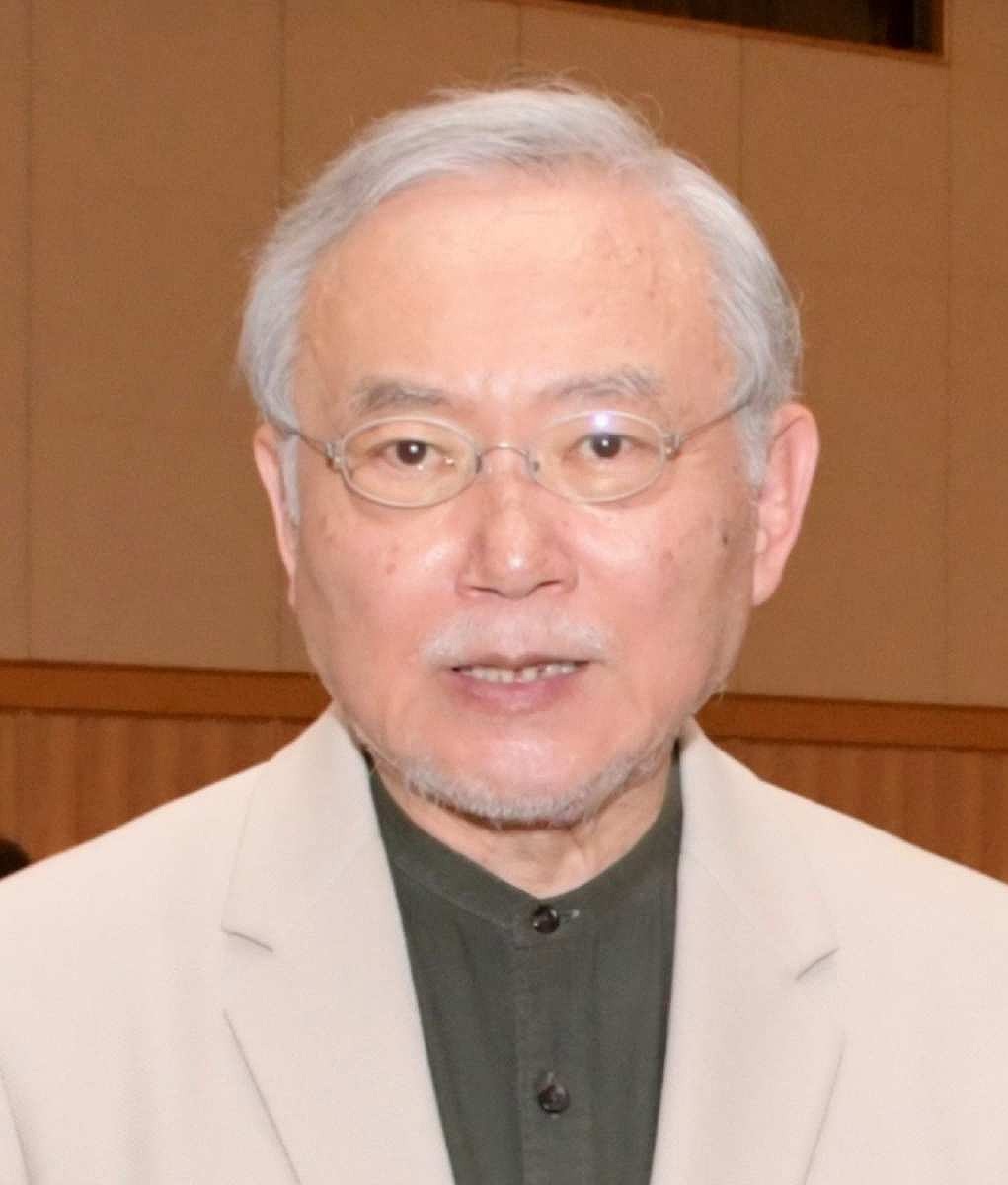Aerial view of the Meiji Jingu Gaien area in central Tokyo seen in September 2023.
15:45 JST, May 23, 2024
The season of hanami cherry blossom viewing parties is over. Some people – especially visitors from abroad to Japan – may have wondered why such large numbers of people gathered around the flowering trees with bento lunches and cups of sake.
The way I see it, they were there not just to view the blossoms, but also to empathize with the flowers because of their ephemerality. They are in full bloom for only a few days, providing an analogy to human mortality. It may not be an exaggeration to say that Japanese hanami visitors consider the cherry blossoms their kin. Such a sentiment seems almost animistic.
The Japanese often regard animals or even plants as their fellow creatures. In the Heian period (794 – late 12th century), an era of aristocracy, poets such as Kino Tsurayuki and Saigyo Hoshi, a Buddhist monk, lamented the short lives of flowers, and thus the short lives of people.
In the Edo period (1603-1867), the most famous haiku poet Matsuo Basho conveyed the depth of nature through images of crows, frogs, crickets and so on. Kobayashi Issa, another haiku master known as a lover of small animals, composed poems expressing his sympathetic feelings toward sparrows, flies, and even mosquitoes. These poets had a keen sensitivity to the changing voices of nature in an animistic way.
Their works are classic manifestations of the animistic or pantheistic tradition of Japanese literature. Even today, such sensitivities are virtually ubiquitous in the daily lives of many people in Japan.
It should be added that the Japanese venerate not only the souls of animals, but also the souls of inanimate objects such as machines and utensils, which are honored through kuyo “funeral services” when their useful lives come to an end.
In this context, I believe that there are two basic cultures in the world. It is assumed that inanimate matter is only material. The other assumes that matter is not only material, but also meta-material or spiritual. That is why people who embody this latter culture sometimes hold funeral services, even for objects.
The Japanese accept and appreciate the modern science that came into the country about 150 years ago, and they have made great contributions to it – as evidenced by the many Nobel Prizes won by Japanese scientists. Yet the Japanese still maintain the animistic mindset as something natural and inherent. Modernism and traditionalism therefore go together without acute contradiction at school or at work. People adhere to modernism professionally while simultaneously cherishing traditionalism in the private sphere, creating the cultural dualism or hybridity that characterizes modern Japan. Some say this duality is part of the Japanese mystique that attracts many foreign tourists now flooding into the country.
Thus, the influx of Western civilization did not destroy animism in the modernization process. Recently, however, Japanese animism is facing a new threat to its survival due to drastic urban development in major Japanese cities. It is clear that animistic qualities are nurtured by a rich environment of trees and greenery. But deforestation and massive urban development have transformed major cities into barren expanses of soulless concrete.
This metamorphosis weakens the animism of the Japanese. Younger generations here are less likely to view matter as something spiritual. To them, giving funeral services to inanimate objects seems a bit strange. Some of them say unequivocally that they have little interest in animism, because it is unscientific and belongs to a bygone era.
Against this background, one could say that urban civilization is hostile to animism. Unfortunately, massive construction projects are now underway in Japan’s megacities, to the detriment of trees and greenery. For example, a redevelopment project in the Meiji Jingu Gaien area of central Tokyo includes a plan to cut down many tall trees, which sparked a major debate.
This situation reminds me of Western conservative intellectuals such as TS Eliot, who were dissatisfied with urban civilization and saw it as a sign of humanity’s arrogance or sin. Whether they live in the East or the West, old-fashioned conservatives tend to share a similar ethos.
All in all, we must be fully aware that the excessive degrowth of Japanese cities could further weaken or endanger Japan’s animist culture. How could Japan be Japanese without healthy and robust animism?

Kagefumi Ueno
Kagefumi Ueno is a civilization essayist and former Japanese ambassador to Guatemala (2001-04) and the Holy See (2006-10).



